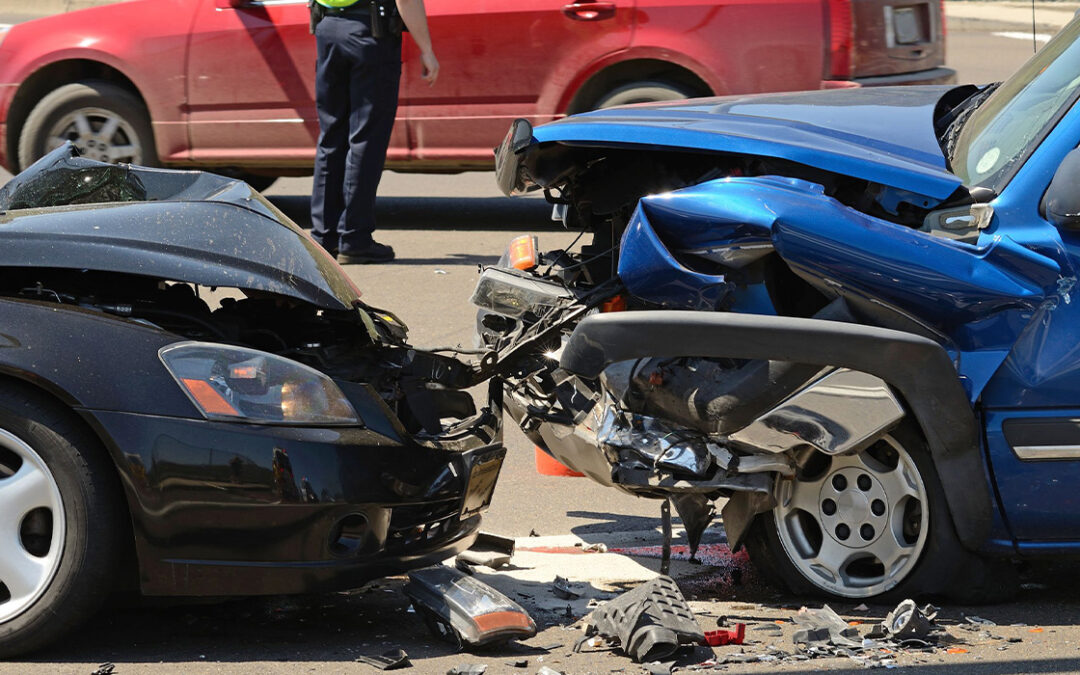
by Queener Law | Oct 27, 2018 | Colorado, Kentucky, Tennessee, Trucking Accident
Electronic Logging Devices Rule Held to be Constitutional
The Owner-Operator Independent Drivers Association filed a constitutional challenge against the electronic logging device rule, and the U.S. Court of Appeals for the 7th Circuit held that the rule is constitutional. It is on track to be fully implemented by Dec. 2017 unless the association appeals it to the Supreme Court of the United States. The regulation will require all large commercial trucks to have electronic devices installed, which will track and record whenever the trucks are in use.
The Lawsuit
The Owner-Operator Independent Drivers Association filed the lawsuit against the Federal Motor Carriers’ Administration on behalf of two truck owners. The drivers alleged that the regulation would violate their constitutional rights to privacy by recording all of their actions while they are driving. The court ruled on Oct. 31, 2016, holding that the electronic logging device mandate does not violate the constitutional right to privacy. The court found that the government’s interest in protecting other motorists outweighed any privacy issues. As a result, the rule is still scheduled to move forward. The plaintiffs have not said whether or not they intend to pursue the matter to the Supreme Court. If they do, and the court agrees to hear the case, it would be a final decision. If they do not appeal it, then the regulation will move forward.
Prior Lawsuit Against Previous ELD Rule Version
In 2010, the FMCSA had attempted to pass a prior regulation requiring electronic logging devices in commercial trucks. At that time, the Owner-Operator Independent Drivers Association filed a lawsuit against the FMCSA on the basis of constitutional privacy concerns. The Appeals Court held that the previous version was unconstitutional because it required the installation of cameras inside of the trucks. The current version does not, allowing it to pass constitutional muster.
Reasoning for the Rule
Large trucks have the potential of causing severe injuries and deaths when they cause truck accidents. This has led the government to institute numerous regulations on the trucking industry. The ELD rule is meant to prevent truck drivers from falsifying their log books and ignoring the hours-of-service rules. Those rules are in place to keep drowsy drivers off of the roads, a problem that a truck accidents attorney frequently sees in injury cases. A truck accidents attorney is hopeful that the new mandate will minimize the number of accidents that happen. Truck accidents often permanently change the quality of lives of their victims.

by Queener Law | Oct 11, 2018 | Auto Accident, Colorado, Kentucky, Tennessee
Why Photos Are Important
Taking pictures immediately after an accident can help preserve crucial evidence of what occurred and which driver was at fault. Photographs can help prove a driver’s liability while also helping convince insurance companies that settling is a wise choice. Pictures can show the angles at which the vehicles collided, the direction of travel, the road and weather conditions, and other relevant information.
After an accident, it is common for people to be in states of shock. They might feel confused and unclear about exactly what happened. Pictures provide crucial information about what caused the accident that people might otherwise fail to notice or forget. Accident reconstructionists can use photographs to determine the relative positions of the vehicles, their speeds, and other contributing factors such as weather conditions or road conditions. This type of information can help present a clear picture of what happened and the liability of the responsible party or parties.
When and How to Take Photos
People who are injured in accidents that they believe were the fault of the other drivers should always try to take pictures immediately after the accidents. If they cannot do so themselves, they should ask someone else to photograph them. The pictures can be taken with a camera that is kept in the car or with a smartphone. The photographs should be taken before either vehicle is moved. People should take photographs of the positions of the cars and the damage to each. They should also take photographs of the other vehicle’s license plate. After getting these pictures, people should take wider pictures of the scene, including any road debris, skid marks, weather, nearby traffic control devices, or speed limit signs. Taking as many pictures as possible is a good idea.
In addition to taking pictures of the accident scene, people should also take photographs of their injuries. This can help show the link between the accident and the injuries if the insurance company attempts to blame the injuries on some intervening cause. People should also try to get the names and contact information of any witnesses who saw the accident so they can be contacted later. Having photographs and witness statements may help people succeed in subsequent claims with insurance companies.

by Queener Law | Aug 16, 2018 | Auto Accident, Colorado, Kentucky, Tennessee
Impact of Loud Music
Listening to loud music can negatively impact a driver’s reaction times and driving abilities. Studies indicate that listening to certain types of music can reduce driver aggression and stress, but tempo, volume, and type may play a significant role in driver performance. If drivers are distracted by loud music, they may fail to react in time to avoid accidents, drift into other lanes and collide with other vehicles or pedestrians, or fail to hear emergency vehicles approaching. Researchers found that listening to music can cause teenage drivers to drive inattentively in a study that was conducted at Ben-Gurion University of the Negev in Israel. In the study, the researchers recruited 85 teen drivers who were ages 17 and 18 to drive specially wired cars along 40-minute routes with driving instructors. During some of the drives, the teens either didn’t listen to music or listened to soundtracks that had been created by the researchers to encourage safe driving. In two of the drives, the teens were told to bring their own playlists of music from home to listen to while they drove.
While the teens reported that they felt better when they drove while listening to their own music, they exhibited multiple problematic driving behaviors. They turned the volume up much higher when they listened to their own music. The driving instructors noted that the teens were likelier to weave in traffic, speed, and drive aggressively when they were listening to their own music. All of the drivers committed three or more driving errors when they listened to their own music at high volumes. The researchers noted that teen drivers are less able to process auditory and visual information simultaneously and that listening to music can be distracting to them. More experienced drivers may not be as distracted by listening to music when they drive. A study demonstrated that older drivers who listen to music while they drive may actually display improved driving behaviors. The researchers in that study posited that drivers might need some form of stimulus while they drive to prevent boredom. While the volume, tempo, and type of music can impact driver response times, distraction levels, and overall performance, it is still unclear which factors affect driving the most.

by Queener Law | Aug 9, 2018 | Colorado, Kentucky, Tennessee, Trucking Accident
What is Relay Trucking?
Relay trucking could be the answer to improving truckers’ work/life balance, preventing accidents, and saving lives. According to the FMCSA and NHTSA, fatigued and overworked drivers cause most commercial truck crashes. The FMCSA requires drivers and carriers to observe implemented hours of service regulations. Even with those limits, drivers often work long shifts with few or no breaks and are under pressure to meet deadlines are more prone to causing accidents. Truckers who engage in point-to-point, full-truckload freight loads have a tough job. They stay with the freight from the time it has been loaded on their rig until they reach the load’s destination. The truckers spend long hours on the road and often days away from their homes and families. The FMCSA requires drivers to take breaks, and their rigs are outfitted with electronic monitoring to keep track of driving and rest hours. However, driver fatigue still happens.
Less-than-full loads use a hub and spoke system where trucks are changed at different hubs along the freight’s journey. But this method is too costly and time-consuming for full loads. However, relay trucking, a new approach suggested by researchers at Oregon State University could improve the quality of life for truckers and save lives. This new method would rely on a large-scaled mixed fleet dispatching system. With relay trucking, the length of a trucker’s full-load trip could be reduced by 66 percent without delaying the delivery process. While a driver gets the rest he needs, another driver along the relay route would take over at the specified relay point and take the load to the next relay point and so on until the destination is reached. Theoretically, this method could be more efficient because the freight is constantly moving, shortening delivery times.
Relay Trucking Can Help Save Lives
According to the IIHS, in 2016, 3,986 people died in large truck accidents. Other drivers or passengers on the road accounted for 66 percent of those deaths. Truckers are required to comply with federal regulations of driving no more than 11 hours at a stretch, but some violate the law and go longer than 11 hours. This increases their risk of causing an accident from driver fatigue. Relay trucking would reduce the number of hours a trucker would drive, reduce driver fatigue and help save lives.

by Queener Law | Jul 20, 2018 | Colorado, Kentucky, Personal Injury, Tennessee
Problematic Plane Inspections
FAA safety inspectors may have improperly approved thousands of aircraft for commercial operation without first reviewing the exemption limitations that could cause them to be prohibited. A whistleblower made a report to the Office of Special Counsel, which requested that the Federal Aviation Administration conduct an investigation. The investigation found that more than 11,000 planes that should have failed their inspections were passed by the inspectors, endangering the public.
According to the whistleblower, the safety inspectors regularly approved planes to fly without reviewing critical safety information about the planes, passing many that should have failed their inspections. Some planes that were passed had rear exit doors that were nearly inaccessible, which could mean that passengers on the plane could be trapped in the case of a crash. Many planes that were passed had expired registrations at the time of their inspections. A number of planes that were no longer registered continued to be operated for flights.
Findings of the FAA
The FAA conducted its investigation and reported its findings to the Office of Special Counsel. It substantiated the report that the planes were passed despite having inaccessible exit doors. According to the FAA, some of the planes had interior doors installed that blocked people’s access to the rear exits. The planes are only permitted to have those interior doors if they have locking mechanisms installed that prevent the doors from becoming closed. However, many of the planes did not have the locking mechanisms installed and were still allowed to fly. The FAA also substantiated the whistleblower’s report that some planes were allowed to continue flying despite having expired registrations in violation of the FAA’s safety regulations.
Corrective Actions
The FAA recommended a number of corrective actions, including the development and implementation of a corrective action plan that includes specific due dates. It also recommended clarifying any exclusions or limitations that are included in the FAA manual to make certain that inspectors look for the locking mechanisms and to fail passenger planes that don’t have them. It also recommended that the registration system is updated and that planes that are expired are not passed.

by Queener Law | Jul 17, 2018 | Colorado, Kentucky, Tennessee, Trucking Accident
Truck Driver Shortage
The nationwide truck driver shortage could result in younger truckers behind the wheel of big rigs that cross state lines, raising the risk for truck accidents. Commercial drivers who are between the ages of 18 and 21 are six times likelier to be involved in fatal trucking accidents than older, more experienced drivers. The push to lower the interstate truck driving age comes in response to a stronger economy and the increased demand for truckers across the U.S. The shortage is expected to grow as today’s drivers begin retiring.
There is currently a truck driver shortage across the country because of the improved economy. In 2016, the trucking industry was short by 36,500 drivers, and the number was expected to reach 50,000 by the end of 2017. The shortage is expected to increase to 176,000 by 2026. Retirement is one factor causing the shortage of truckers. According to the American Trucking Association, the average age for truck drivers is just 49. Another reason for the shortage is the improved economy. Consumers have a higher demand for goods, which necessitates more freight. Because unemployment rates are low and truck driving is hard, it is becoming more difficult to attract enough drivers to the industry.
Proposed Law to Decrease Minimum Age
In response to the shortage, Representative Duncan Hunter of California has proposed a law that would decrease the minimum age for over-the-road truck drivers from 21 to 18. Proponents of the law argue that lowering the age would attract more drivers straight out of high school because they wouldn’t have to wait for three years after graduating. They argue that younger drivers are currently allowed to drive short distances within their own states but not to cross state lines. Opponents to the law argue that young drivers between ages 19 and 20 are six times more likely to be involved in fatal truck accidents than are older drivers. They argue that the law would place an unreasonable degree of risk on the public because younger drivers are simply not as safe as older drivers. If the law is passed, more younger drivers may be on highways across the nation. This could increase the danger of trucking accidents to the public at large.






